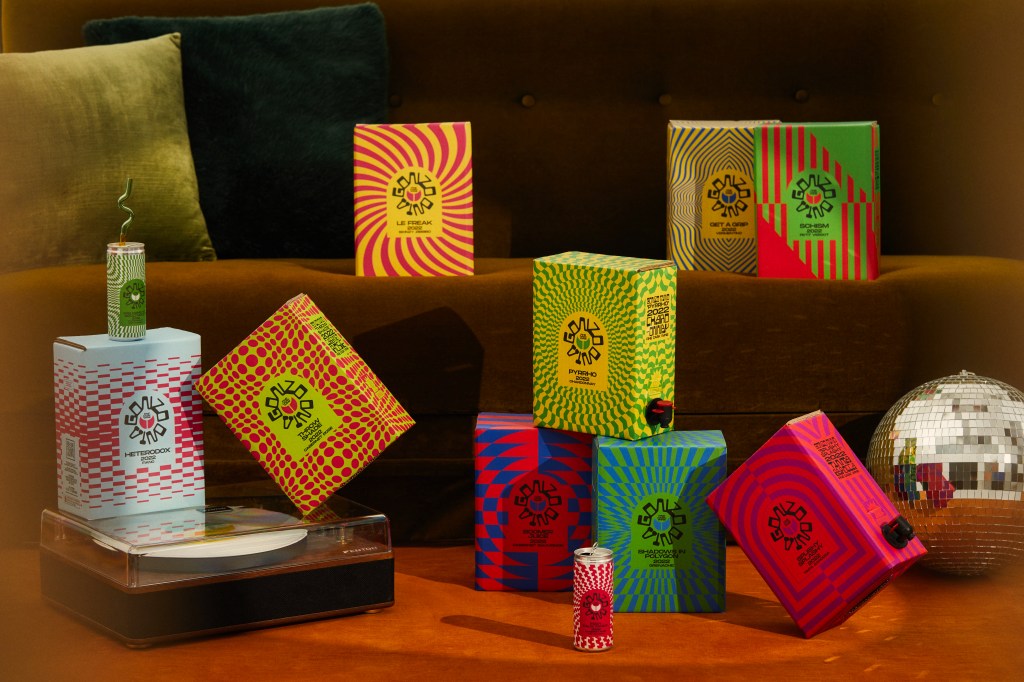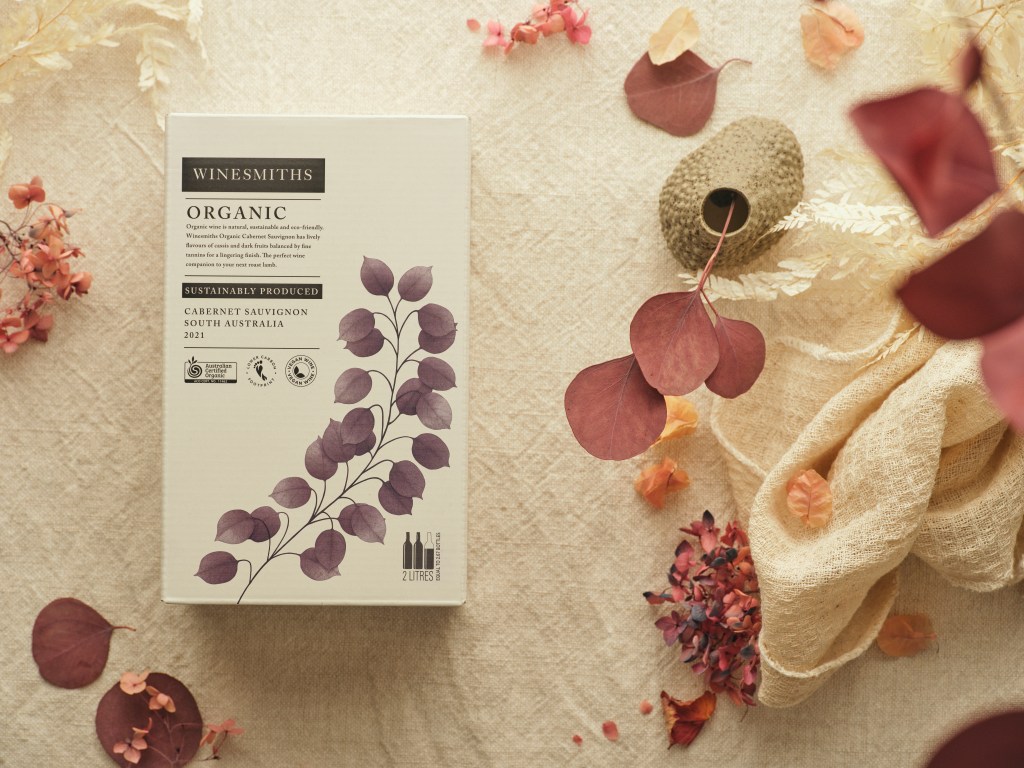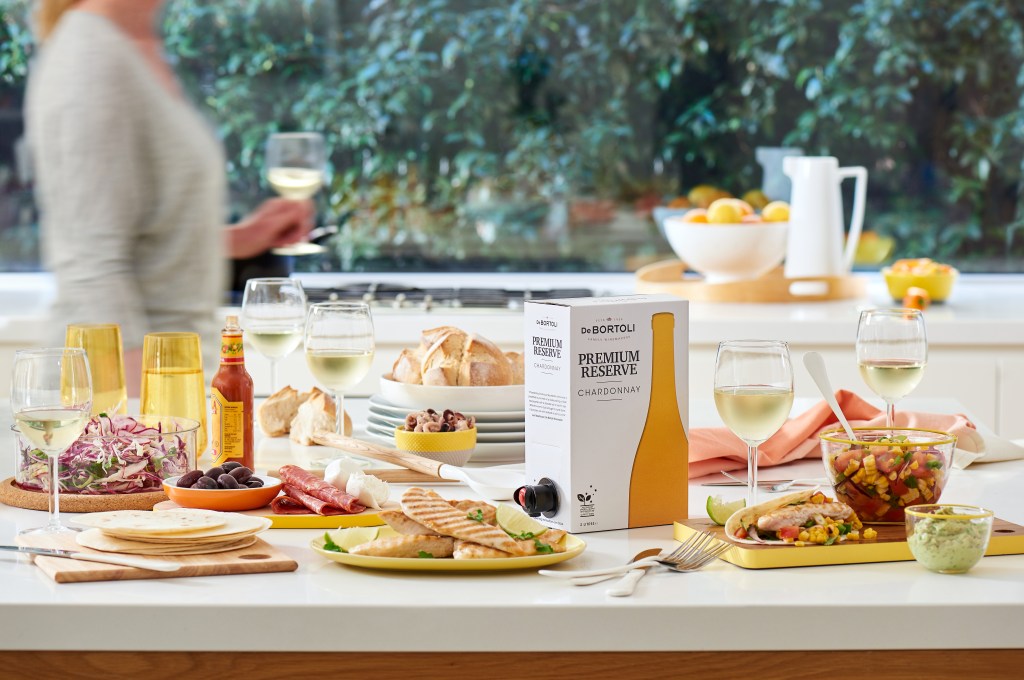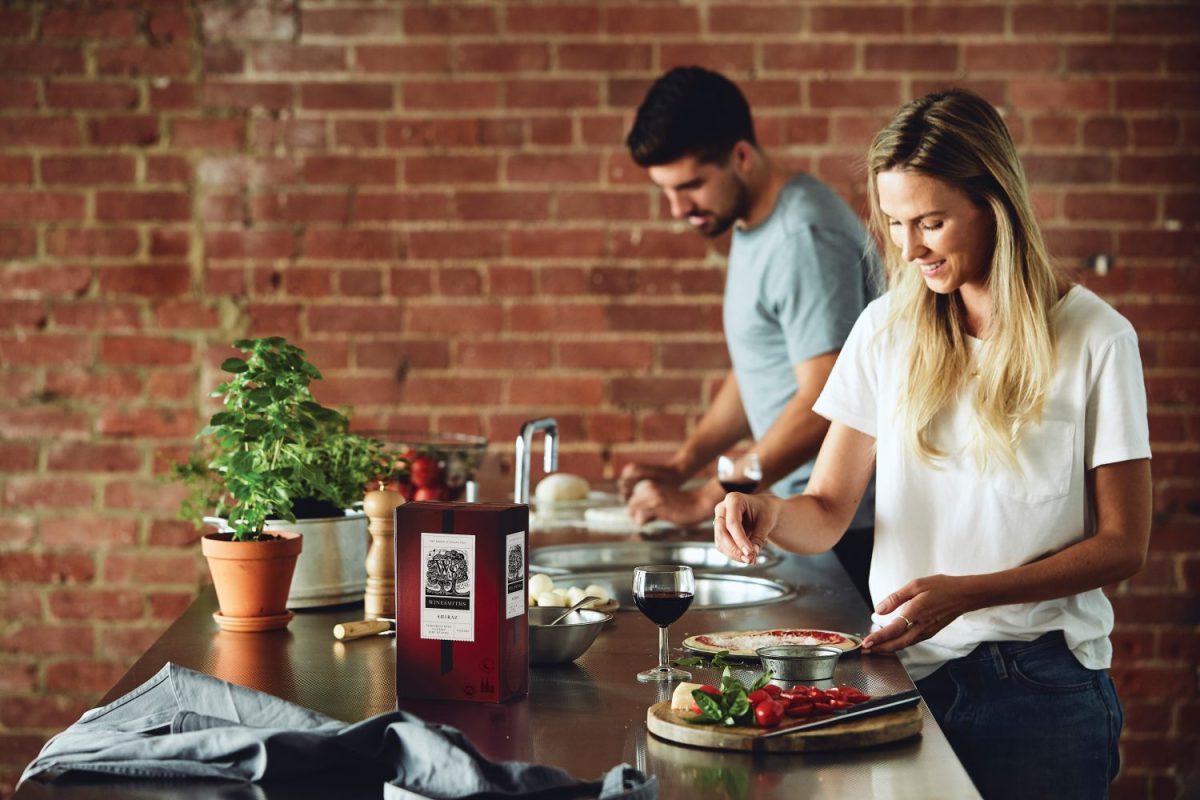With sustainability and cost-of-living squeezes high, the humble cask wine is being looked at in a new light, and presents new opportunities for Australian liquor retailers.
Cask wine, bag or wine in box, has a long history in Australia, having first been introduced by Thomas Angove in 1964. A few years later, Charles Malpas, working for Penfolds Wines, added an airtight tap to the design, and it has remained largely similar ever since. In the intervening years, ‘goon’ has gone on to become something of an Australian cultural icon, albeit, one that has not always enjoyed the best reputation.
Bags of quality
These days, the cask wine segment contains a diversity of styles and wines of significant quality, as Leanne De Bortoli of De Bortoli Wines explains.
“The wine quality for De Bortoli Wine In Box ranges is equivalent to bottled wine,” De Bortoli says.
“In essence, Wine In Box or bottled wine are made the same way. The key difference in the production of Wine In Box is to ensure the wine quality is optimum based on the vessel. Bottle quality wine, just in a box.”
This high quality offering available within the category is also highlighted by Calabria Family Wines’ Banta Box range. Introduced in 2020, the range has included ‘alternative varietals’ not often seen in the cask wine’s orthodox offering.
Andrew Calabria, Sales and Marketing Manager, explained: “We launched Banta Box with mainstream varieties, but also with a Montepulciano and putting alternative varieties in there.
“So it was just sort of nudging the category a little bit to think a little bit differently or less traditional in the Australian space.”
Marcus Radny, Winemaker for Gonzo Vino, a specialist wine in a box producer, outlines how the style contains wines in the fashionable low-fi or biodynamic style too.
“The casks for Gonzo are all made in a minimal intervention style,” Radny says.
“So all organically sourced fruit, wild ferments, no additions, no synthetic additives. The white wines all see extended skin contact to build texture and richness and all the whites see full malo[lactic fermentation].
“The reds all see reduced maceration time to give them more crunch and vibrancy. None of the wines are filtered and none have any fining agents used.”
Hill-Smith Family Estates is another major producer with a stake in this category, producing the Winesmiths range of cask wine. Again, premium quality is the focus here, as Lisa Antoney, Winesmiths Senior Brand Manager, illustrates.
“It’s wine that refuses to compromise in quality in any way. It’s largely single variety and single vintage,” Antoney says.
“It’s a collection of well-crafted, highly awarded, affordable wines that doesn’t come at the sacrifice of quality. It’s a package that not only holds the wine fresher for longer, but that is also better for the environment than glass.”

Changing the narrative
Antoney is touching upon a crucial element of the cask wine story that retailers can leverage: sustainability.
De Bortoli and Radny have further advice for how to shift the narrative surrounding wine in a box, with both placing the emphasis on the sustainability factor.
“There are many reasons for shoppers to consider Wine In Box… [including the] reduced carbon footprint. Many consumers are not aware that most of the carbon dioxide that is emitted during the wine production process is actually during the transportation of the wine itself,” De Bortoli says.
Radny concurs, adding: “Sustainability plays a massive role in the product too, so should be a big USP for the [retail] staff.”
As bags and boxes of wine are comparatively much lighter and transport a higher volume at a time, cask wine has a significantly lower impact on the environment than its bottled counterpart.
Furthermore, a significant proportion of the cask wine packaging is cardboard: lightweight and recyclable.
The environment (and appealing to greener minded customers) was certainly part of the thinking at Calabria Family Wine Group when the company introduced Banta Box. Calabria stated that the producer took inspiration from the creativity on show in the Scandinavian liquor market.
“They are always looking to innovation and really trying to stay ahead of the curve, so they lead with sustainability, and I think that’s where the bag in box format has always existed and started to make a bit of a difference, but it’s not just about bag in box being the cheapest on the shelf,” Calabria says.
“From the Scandinavian market, we had a lot of information come back that [sustainability and cost] is where it’s tapping into a different consumer base, which, given the current climate, does make a lot of sense.”
For Winesmiths, organic produce and sustainability are a major part of the brand’s selling point, which Antoney believes provides retailers with a ready-made narrative.
“As a member of Sustainable Winegrowing Australia, Winesmiths continues to seek ways to become more sustainably produced, from recycling our wastewater, using recycled materials and actively seeking opportunities to recycle our bladder,” she outlines.
“Organic wine is natural and eco-friendly. Meticulous work in the vineyard ensures that the grapes are in perfect condition when they are picked, the fruit is then fermented with indigenous yeast and with little intervention from the winemaker.
“While there is an opportunity to provide great value to your consumers, there is equally great opportunity to fulfil consumers’ desire to make a more sustainable choice.”

The value proposition
The difficult economic terrain for many Australian drinkers is well known, and in turn presents challenges for retailers looking to secure a place in the household budget. The premium cask wine category may provide a solution.
“With the current rate of inflation causing an increase in the cost of household essentials, discretionary spend in luxury categories including alcohol is at risk,” Antoney says.
“Wine retailers are amongst those experiencing a more value-conscious shopper, however, importantly are observing that these shoppers are still seeking brand authenticity and quality cues with their limited spend.
“Wines that can offer affordability and overdeliver for the price that shoppers pay are well-positioned to support retailers through the change in purchase behaviour, including Winesmiths.”
The affordability of the subcategory is also referenced by De Bortoli, who notes: “With the current pressures on household budgets, Wine In Box is a great offering for shoppers who would like to stretch their dollar. Each De Bortoli four-litre premium Wine In Box contains the equivalent of more than five bottles of wine, but costs a lot less.”
Data supplied by Shopper Intelligence from Q4 2022 also shed some light on who is buying cask wines, and why. According to the analyst, 55 per cent of purchasers are men, 40 per cent are aged over 55, and 60 per cent purchased the wine to drink ‘while relaxing at home.’
But Radny has also found that the demographics for cask wine are broadening too, as more consumers realise what the format can offer them.
“Our casks are sold to all age groups and demographics, but the biggest market is between 24 and 35 and female. The wines are being consumed as ‘lifestyle wines’ and often at the park, camping, beach, hiking,” he says.

Cask wine recognition in-store
Producers in this story pointed to a variety of things to keep in mind about the cask wine category in-store.
One great thing to highlight to customers is how cask wine can remain fresher for longer, a key consideration for consumers who might be tightening their belts.
Radny said: “Retailers need to focus on the benefits of longevity once opened (six to eight weeks in our case).
“They can also open a box and have it on tasting in the shop for almost two months to get the consumer trying before they buy.”
Antoney agrees that highlighting the new reputation of cask wine can really help open consumers’ eyes to what the category can offer.
“Bring the format outside of its aisle! Wine On Tap has so many benefits but to make it easy for the shopper to weigh these up, we recommend including key SKUs in bottled aisles, at point of purchase or displays,” she comments.
“This allows the consumer to weigh up the option of glass versus cask and choose the most suited to their occasion and need.
“We refer to the format as Wine On Tap, which is one step in challenging the stigma around the format.”
Calabria similarly agrees that conversation and education is key.
“Just talking about it – I think it’s such an important task… Just making some noise about it. I think the important thing to highlight is what [the category is] doing differently,” Calabria said.
“There’s a fair bit of activity at the moment, and so I think if we’re making noise about that, it brings awareness to trade and therefore they can talk to their customers about it.”
Radny said that independent retailers can showcase the category most effectively in this way.
He concluded: “Gonzo already sells to over 100 independent retailers and has done since 2018. We focus on this market exclusively as they are the best ambassadors for the brand.”

